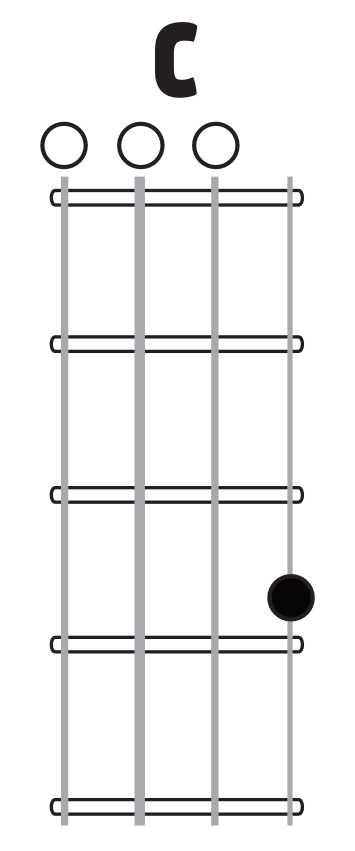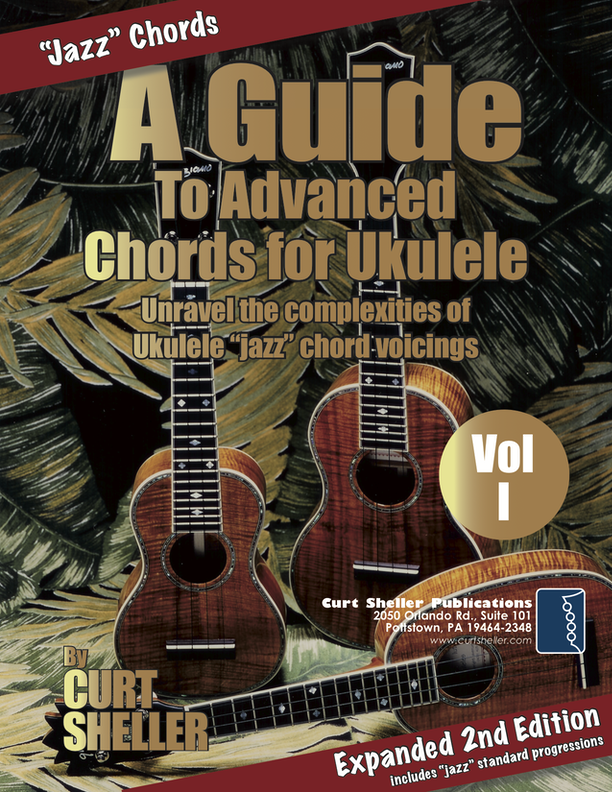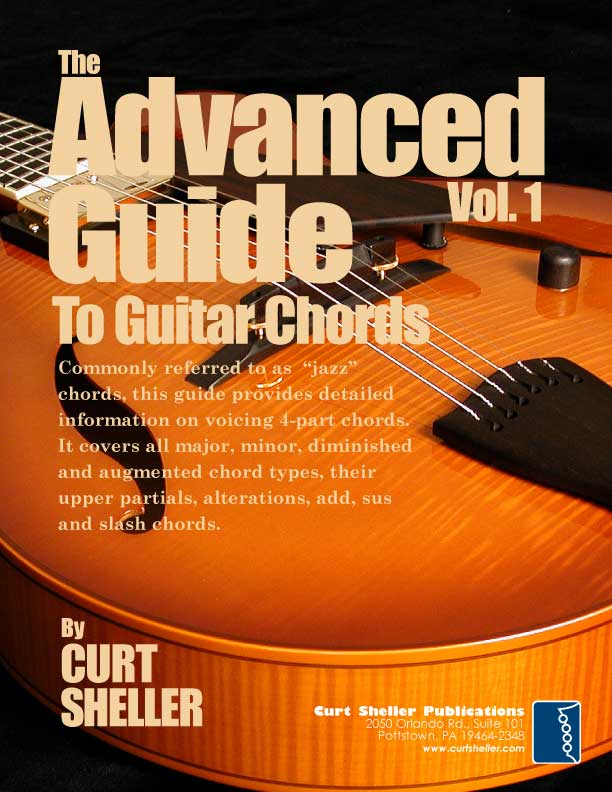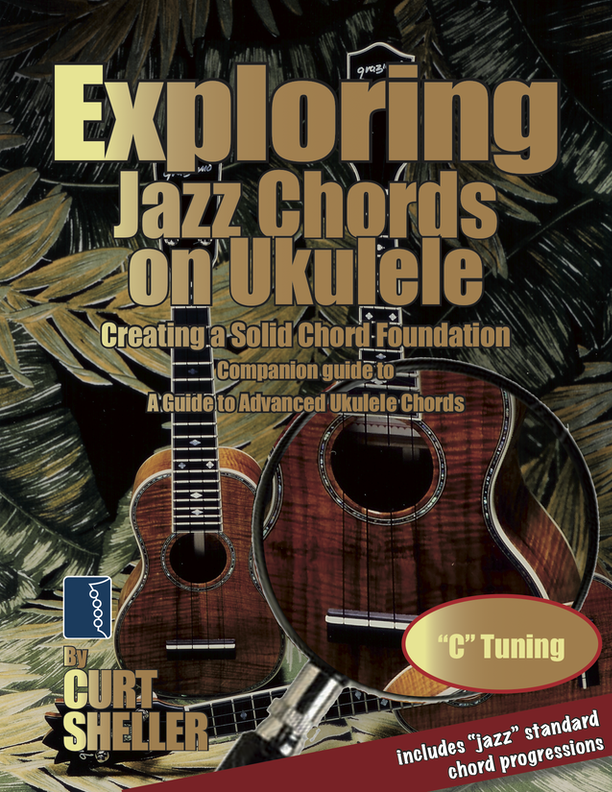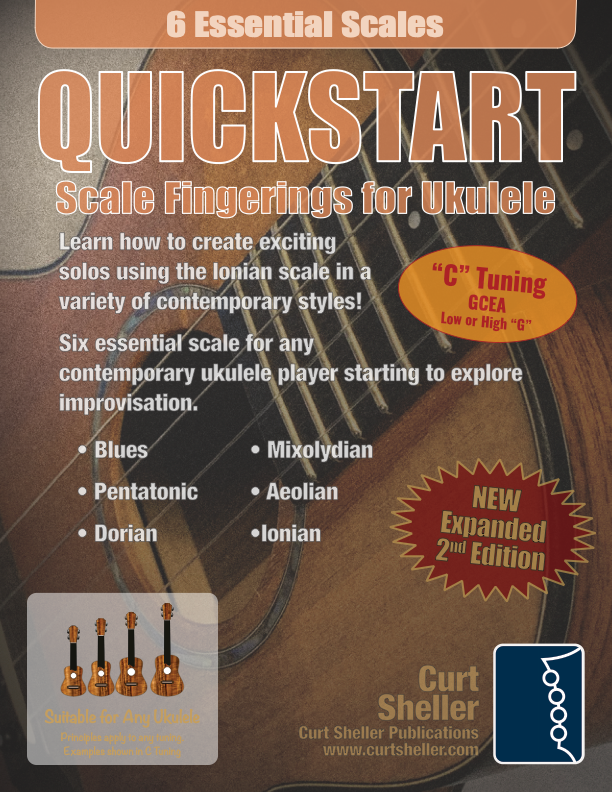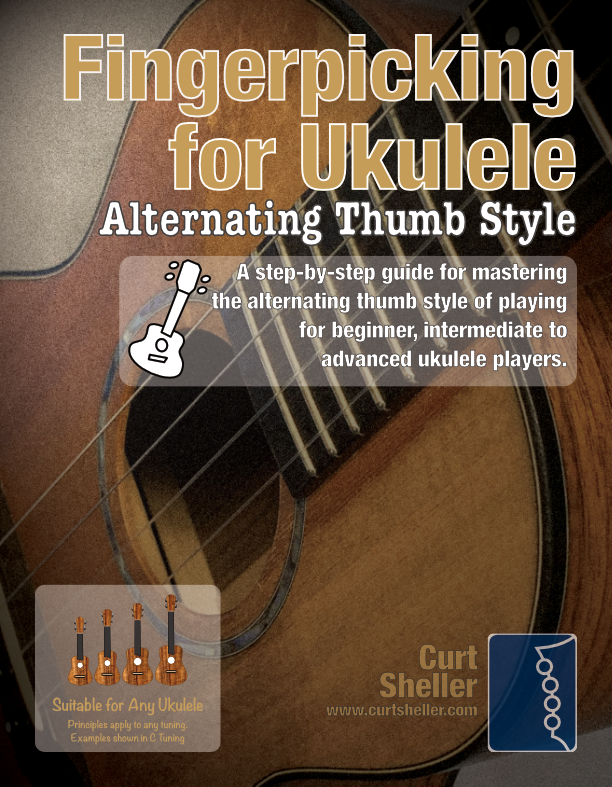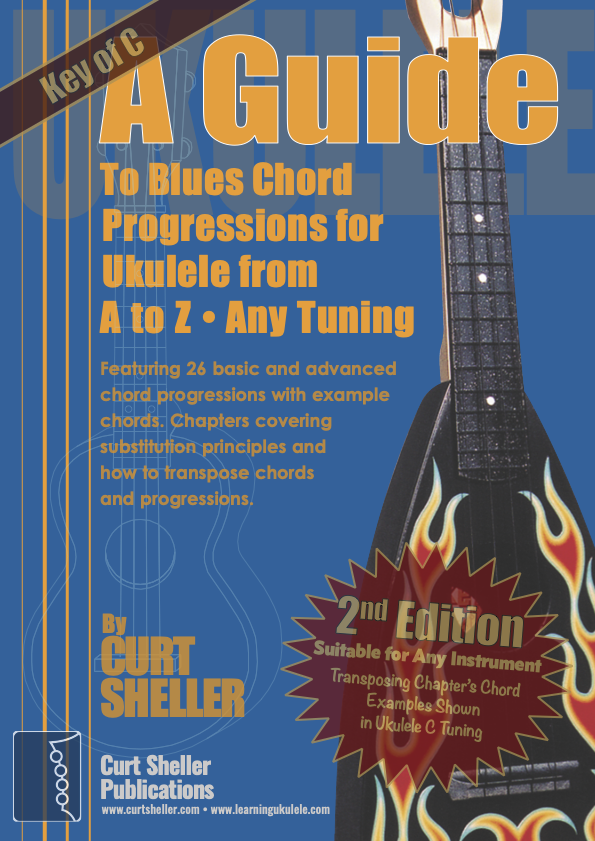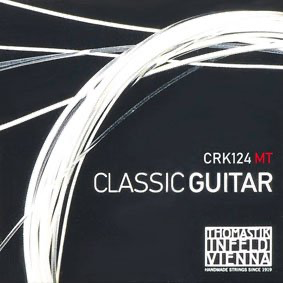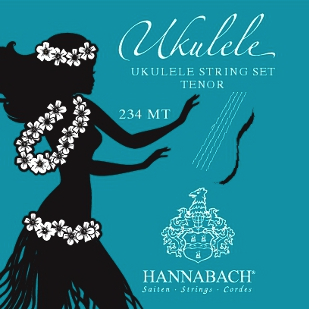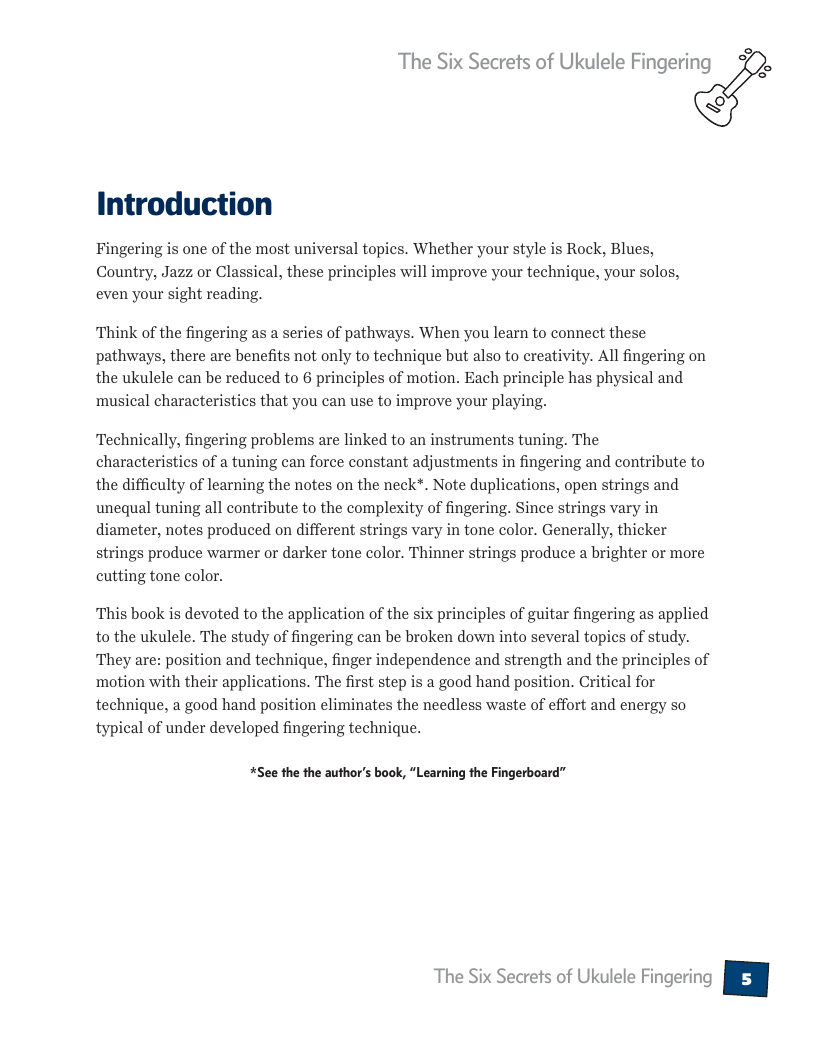Share Six Secrets of Ukulele Fingering - Principles
on:
Bluesky
•
facebook
•
twitter (X)
LESSONSeries : Six Secrets of Ukulele Fingering Series
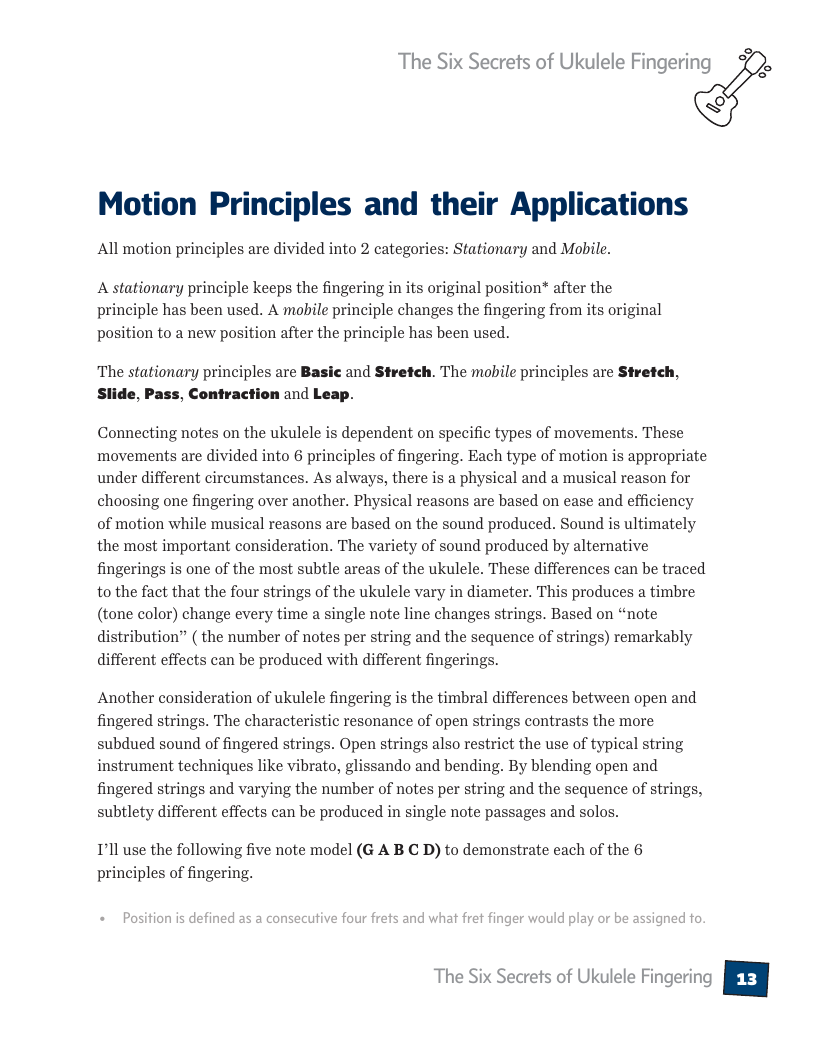
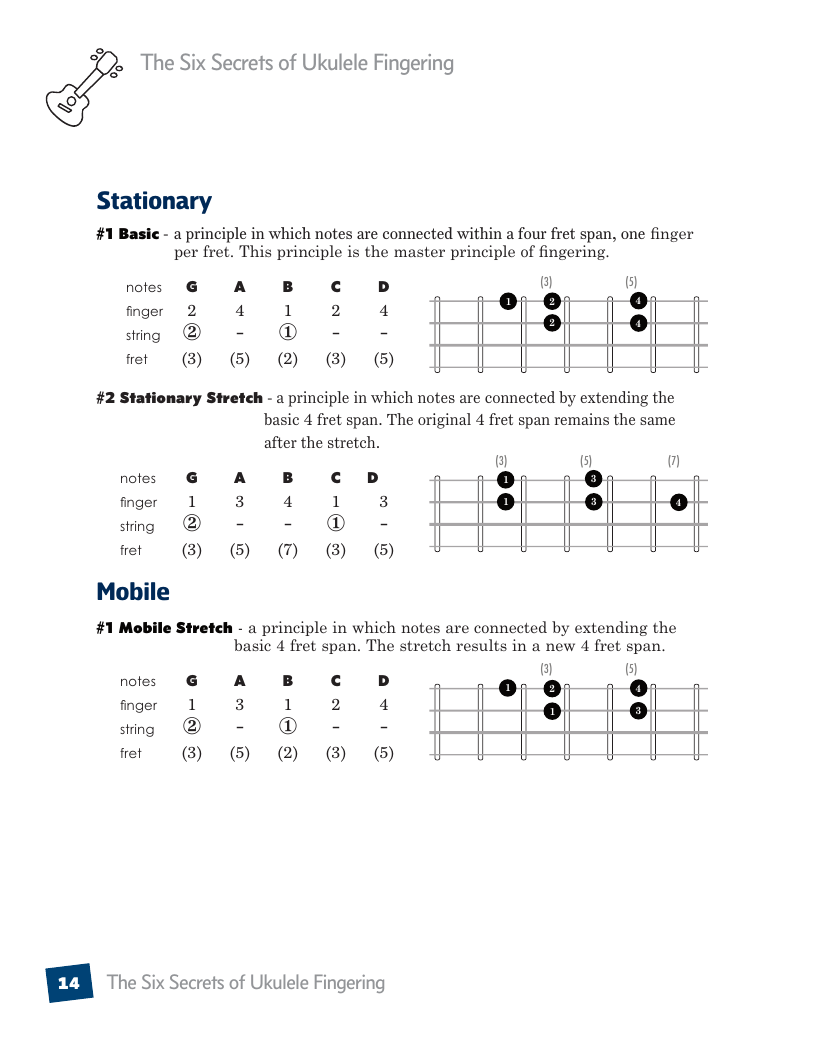
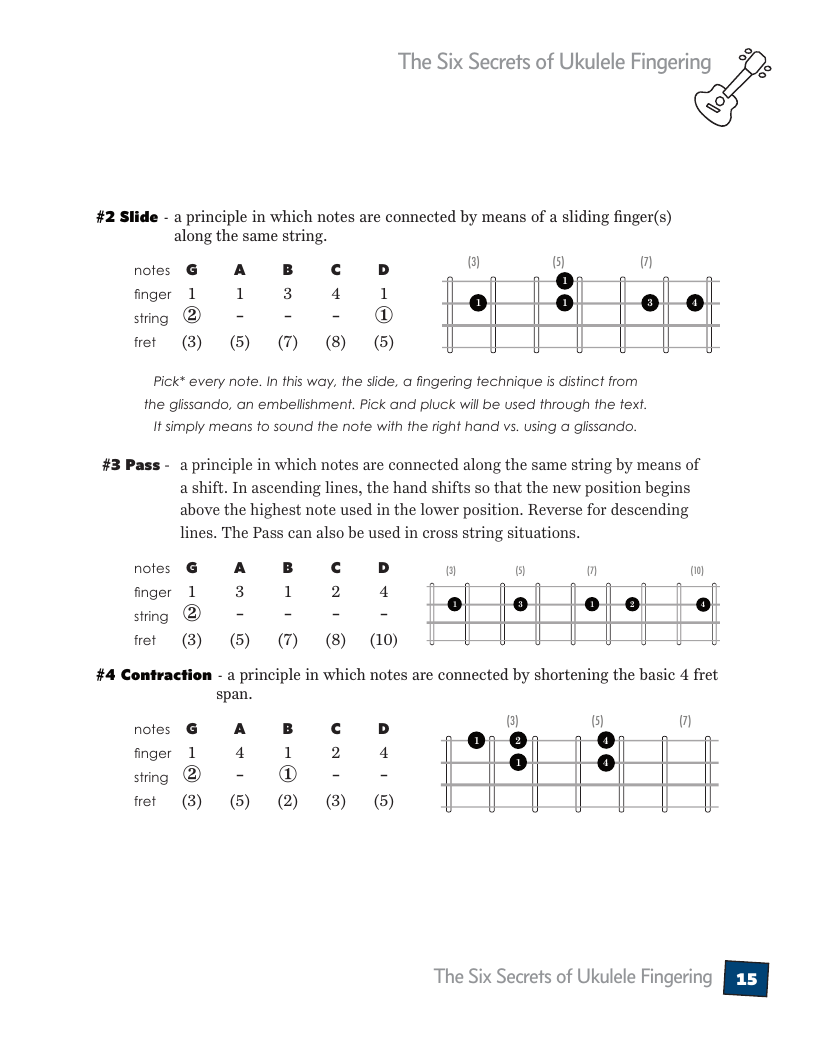





All 4 sample page(s) are viewable on-line.
If you're a registered site member, have verified your email address, and have the correct permissions you can view ALL the pages of this PDF or Samples pages at a larger size using the LearningUkulele.com Online PDF Viewer .
This Download is NOT part of your LearningUkulele.com membership level.
Sign-up for Premium Site Access or Upgrade Your Plan your current access level to download this PDF or your can purchase a copy for download.
After purchasing a PDF , a download link or PDF will be sent to you within 48hrs.
Contact LearningUkulele.com if there are any issues.
Each PDF file is a formatted, high resolution file that prints out great. You'll need a PDF Reader or application capable of viewing PDF files to view the PDF.
NOTE: Download the current PDF file for the latest, complete, and most up-to-date version. As well as additional information not presented on-line.
Members and Active Students need to sign-in to download this lesson's PDF for the complete lesson.
Six Secrets of Ukulele Fingering - Principles
Basic Applications of the Six Secrets of Ukulele Fingering Motion Principles.
Additional Content
Available for Premium Site Access Plans Only
Sorry, can't give it ALL away!
This content requires a Premium / Gold Access Plan or enrolled in the Study with Curt - On-line or Private Lesson Program.
To view additional content for this page you'll need to either Sign In or Register or Upgrade to a Premium Site Access Plan.
A stationary principle keeps the fingering in its original position* after the principle has been used. A mobile principle changes the fingering from its original position to a new position after the principle has been used.
The stationary principles are Basic and Stretch. The mobile principles are Stretch, Slide, Pass, Contraction, and Leap.
Connecting notes on the ukulele is dependent on specific types of movements. These movements are divided into 6 principles of fingering. Each type of motion is appropriate under diTerent circumstances. As always, there is a physical and a musical reason for choosing one fingering over another. Physical reasons are based on ease and efficiency of motion while musical reasons are based on the sound produced. Sound is ultimately the most important consideration. The variety of sound produced by alternative fingerings is one of the most subtle areas of the ukulele. These diTerences can be traced to the fact that the four strings of the ukulele vary in diameter. This produces a timbre (tone color) change every time a single note line changes strings. Based on “note distribution” ( the number of notes per string and the sequence of strings) remarkably different effects can be produced with diTerent fingerings.
Another consideration of ukulele fingering is the timbral differences between open and fingered strings. The subdued sound of fingered strings. Open strings also restrict the use of typical string instrument techniques like vibrato, glissando and bending. By blending open and fingered strings and varying the number of notes per string and the sequence of strings, subtlety diTerent eTects can be produced in single note passages and solos.
The Six Secrets of Ukulele Fingerings the following five note model (G A B C D) to demonstrate each of the 6 principles of fingering.
Basic Applications of the Six Secrets of Ukulele Fingering Motion Principles.
Additional Content
Available for Premium Site Access Plans Only
Sorry, can't give it ALL away!
This content requires a Premium / Gold Access Plan or enrolled in the Study with Curt - On-line or Private Lesson Program.
To view additional content for this page you'll need to either Sign In or Register or Upgrade to a Premium Site Access Plan.
A stationary principle keeps the fingering in its original position* after the principle has been used. A mobile principle changes the fingering from its original position to a new position after the principle has been used.
The stationary principles are Basic and Stretch. The mobile principles are Stretch, Slide, Pass, Contraction, and Leap.
Connecting notes on the ukulele is dependent on specific types of movements. These movements are divided into 6 principles of fingering. Each type of motion is appropriate under diTerent circumstances. As always, there is a physical and a musical reason for choosing one fingering over another. Physical reasons are based on ease and efficiency of motion while musical reasons are based on the sound produced. Sound is ultimately the most important consideration. The variety of sound produced by alternative fingerings is one of the most subtle areas of the ukulele. These diTerences can be traced to the fact that the four strings of the ukulele vary in diameter. This produces a timbre (tone color) change every time a single note line changes strings. Based on “note distribution” ( the number of notes per string and the sequence of strings) remarkably different effects can be produced with diTerent fingerings.
Another consideration of ukulele fingering is the timbral differences between open and fingered strings. The subdued sound of fingered strings. Open strings also restrict the use of typical string instrument techniques like vibrato, glissando and bending. By blending open and fingered strings and varying the number of notes per string and the sequence of strings, subtlety diTerent eTects can be produced in single note passages and solos.
The Six Secrets of Ukulele Fingerings the following five note model (G A B C D) to demonstrate each of the 6 principles of fingering.
Sign-IN — it's FREE — to view, un-blur any additional content for this lesson.
Download the PDF file for the latest, complete, and most up-to-date version. As well as additional information not presented on-line.
End of Lesson - Thanks, Hope You Enjoyed It!
Related Lessons, Videos, Lesson Series, Songs, Books & Reference Charts, Resources & Assets, Workshops are below.
Related Lessons
Related Lessons for Six Secrets of Ukulele Fingering - Principles
.
Related Lesson Series
Related Lessons Series for Six Secrets of Ukulele Fingering - Principles
.
Related Songs
Related Songs for Six Secrets of Ukulele Fingering - Principles
.
Related Books & Charts
Related Books for Six Secrets of Ukulele Fingering - Principles
.

Six Secrets of Ukulele Fingering
Updated: 04 Dec 2024
Learn the six fingering principles to navigating the ukulele fingerboard. Fingering is one of the most universal topics. Whether your style is Rock, Blues, Country, Jazz or Classical, these principles will improve your technique, your solos, even your sight reading. Think of fingering as a series of pathways. When you learn to connect these pathways, there are benefits not only to technique but also to creativity.
A Selection of Books & Reference Charts that are recommended for creating a solid foundation with your chosen instrument and music in general.



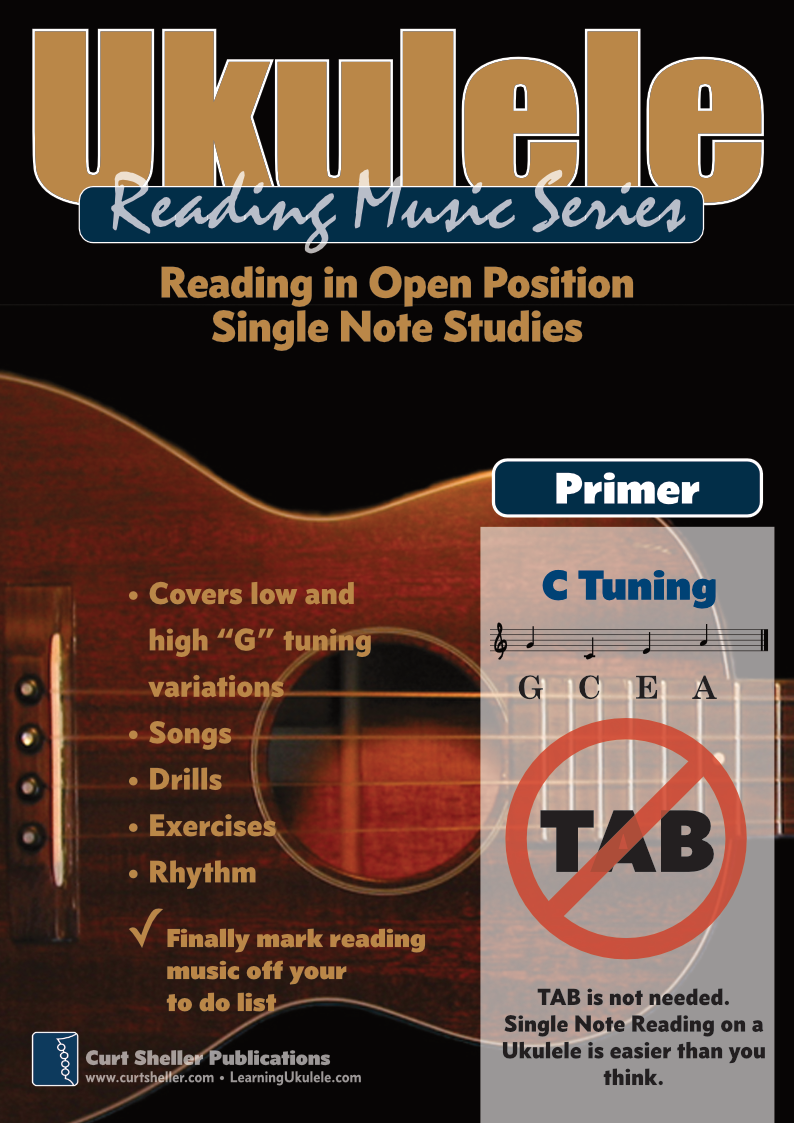
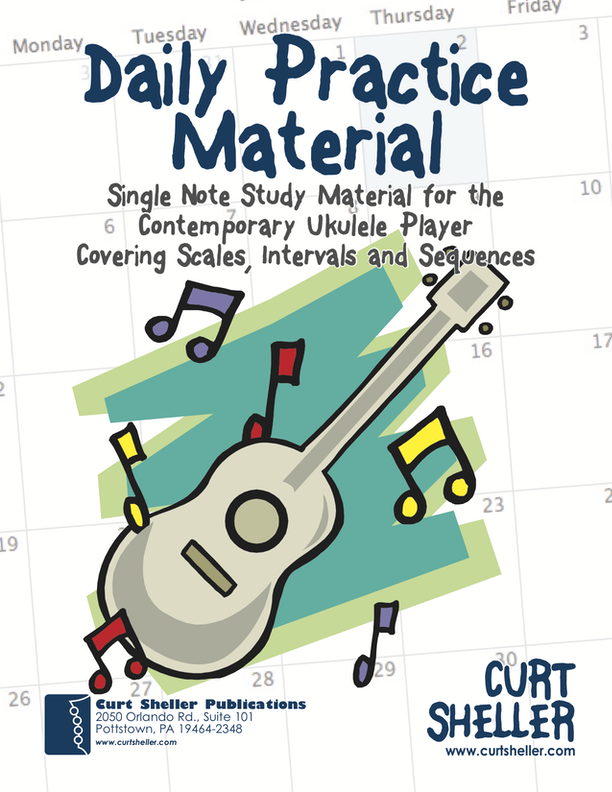
Checkout the Books for additional Handy, Dandy Reference Charts.
Reference Charts
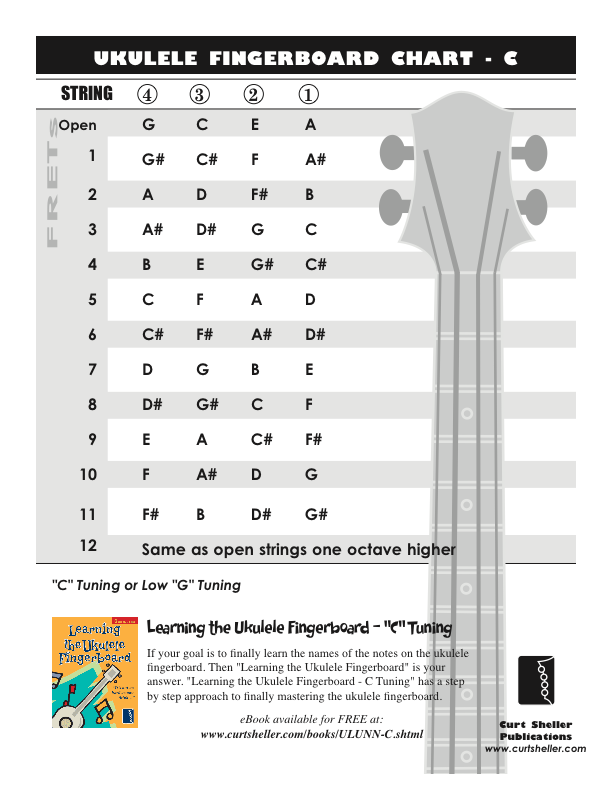
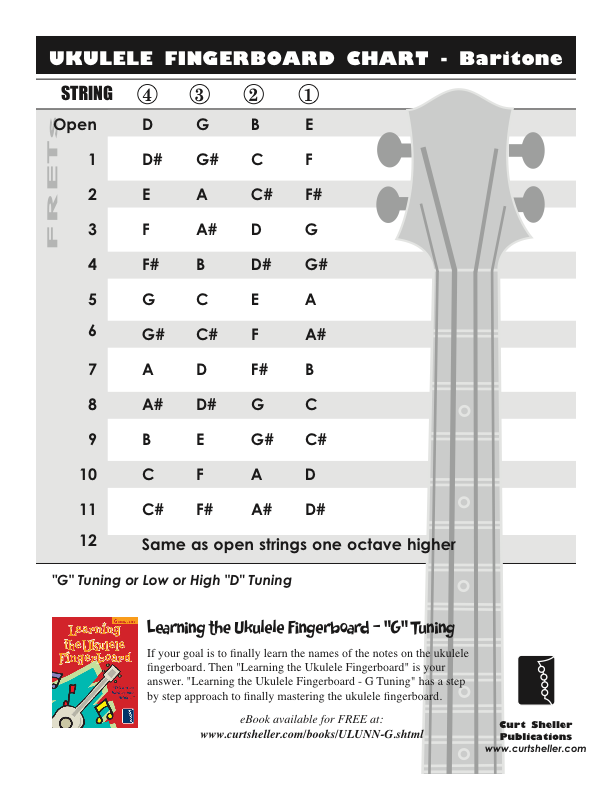

Key Signatures — Circle of Fourths and Fifths – ANSI A & A4 sizes
A handy reference chart of all 15 major and relative minor key signatures. US Letter 8.5 x 11 sized (ANSI-A), A4
Checkout the Books for additional Handy, Dandy Reference Charts.
